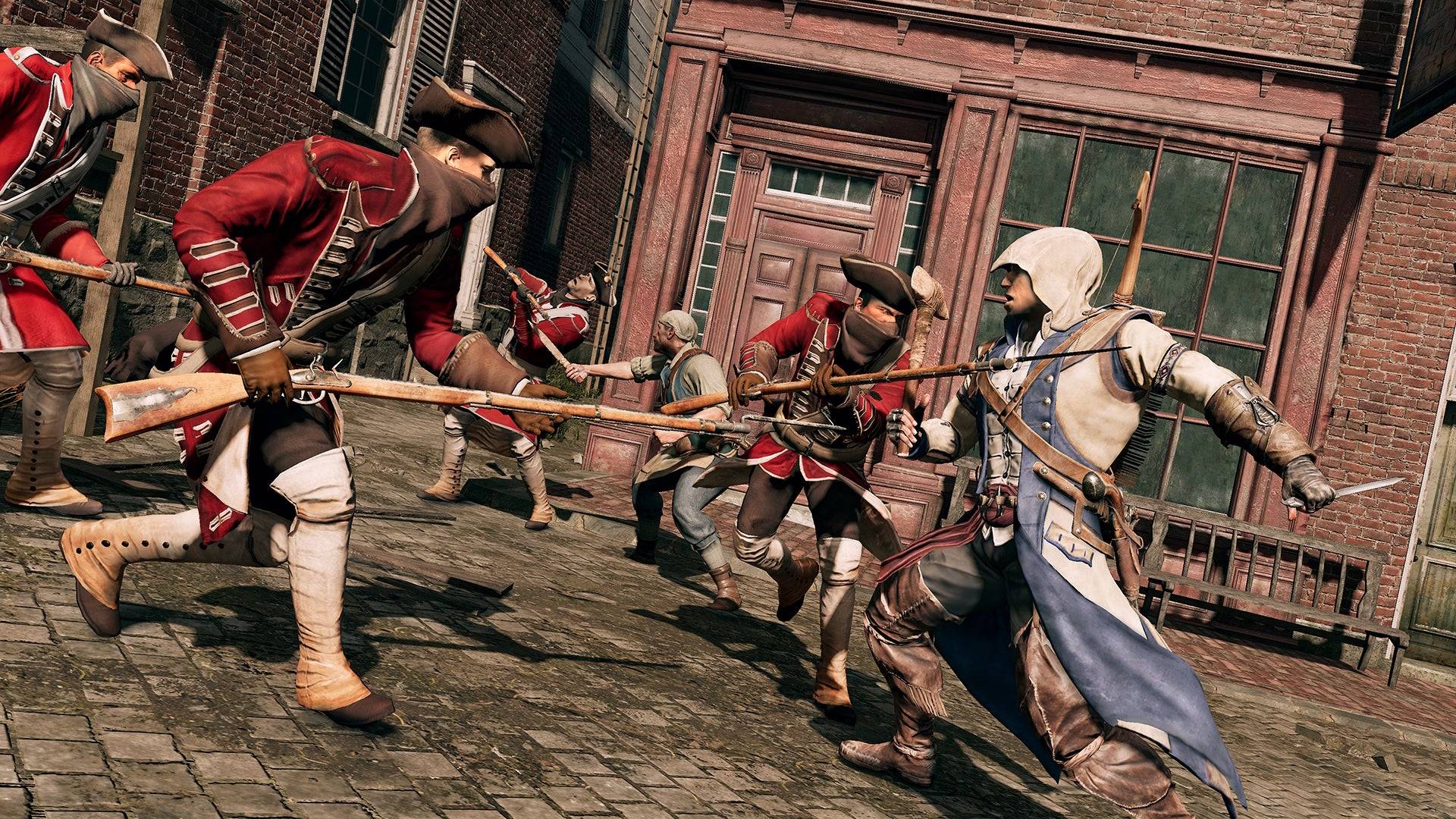One of the most iconic moments in the Assassin’s Creed series unfolds early in Assassin’s Creed 3, when Haytham Kenway completes his mission to assemble a group of assassins in the New World—or so the player initially believes. Haytham's use of a hidden blade, his charismatic presence akin to Ezio Auditore, and his heroic deeds, such as freeing Native Americans and confronting British redcoats, all contribute to this deception. It’s not until he utters the phrase, “May the Father of Understanding guide us,” that the truth is revealed: we have been following the Templars, the sworn enemies of the Assassins.
This twist exemplifies the full potential of Assassin’s Creed. The original game introduced the engaging concept of finding, understanding, and eliminating targets, but its narrative was hindered by the lack of depth in both protagonist Altaïr and his targets. Assassin’s Creed 2 improved by introducing the iconic Ezio, though his adversaries, including the underdeveloped Cesare Borgia in the spinoff Assassin’s Creed: Brotherhood, remained flat. It was in Assassin’s Creed 3, set against the backdrop of the American Revolution, that Ubisoft truly excelled, giving as much attention to the development of the hunted as to the hunter. This balanced approach created a seamless flow from setup to payoff, achieving a rare harmony between gameplay and narrative that has yet to be matched in subsequent titles.
 Image credit: Ubisoft
Image credit: Ubisoft
Despite the generally positive reception of the current RPG-focused era of Assassin’s Creed, there's a consensus among players and critics that the series has been on a downward trajectory. Theories on the cause of this decline vary: some cite the increasingly fantastical elements, like battling mythological beings such as Anubis and Fenrir, while others criticize the inclusion of diverse romance options or the use of real historical figures like Yasuke in Assassin’s Creed Shadows. Personally, I believe the root of the decline lies in the series' shift away from character-driven storytelling, which has become overshadowed by the expansive sandbox elements.
Over time, Assassin’s Creed has expanded its original action-adventure formula with RPG elements such as dialogue trees, XP-based leveling systems, loot boxes, microtransaction DLC, and gear customization. Yet, as these new installments have grown larger, they've also felt increasingly hollow. This isn't just due to repetitive side missions, but also because of their narrative approach. Although games like Assassin’s Creed Odyssey offer more content than their predecessors, much of it feels scripted and lacks the depth of earlier titles. The introduction of player choice in dialogue and actions, intended to enhance immersion, often results in less polished scripts that struggle to maintain character consistency.
The focused narratives of the action-adventure era allowed for well-defined characters, as seen in Ezio’s impassioned speech after defeating Savonarola or Haytham’s tragicomic soliloquy during his final moments with his son, Connor:
“Don't think I have any intention of caressing your cheek and saying I was wrong. I will not weep and wonder what might have been. I'm sure you understand. Still, I'm proud of you in a way. You have shown great conviction. Strength. Courage. All noble qualities. I should have killed you long ago.”
 Image credit: Ubisoft
Image credit: Ubisoft
The narrative quality has declined in other ways as well. Modern games often oversimplify the conflict to Assassins = good and Templars = bad, whereas earlier entries delved deeper into the moral ambiguities between the two factions. In Assassin’s Creed 3, each defeated Templar challenges Connor's—and the player’s—beliefs. William Johnson suggests the Templars could have prevented the Native American genocide, Thomas Hickey mocks the Assassins' unrealistic goals, and Benjamin Church argues that perspective shapes reality, highlighting the British view of themselves as victims. Haytham himself questions Connor’s faith in George Washington, asserting that the new nation might be just as oppressive as the monarchy it replaced—a claim reinforced when it’s revealed that Washington, not Charles Lee, ordered the burning of Connor’s village. By the game's end, players are left with more questions than answers, enhancing the story’s impact.
Reflecting on Assassin’s Creed’s history, the enduring appeal of the Jesper Kyd-composed “Ezio’s Family” from Assassin’s Creed 2 underscores the series' strength in character-driven storytelling. The melancholic guitar strings were meant to evoke Ezio’s personal tragedy rather than just the Renaissance setting. While I appreciate the expansive worldbuilding and stunning graphics of the newer Assassin’s Creed games, I yearn for the series to return to its roots and deliver the focused, deeply personal narratives that originally captivated me. However, in today’s market dominated by sprawling sandboxes and live service-style games, such a return to form may not align with current business models.






![NULL [Remastered]](https://imgs.39man.com/uploads/71/1719651062667fcaf6c483b.png)








